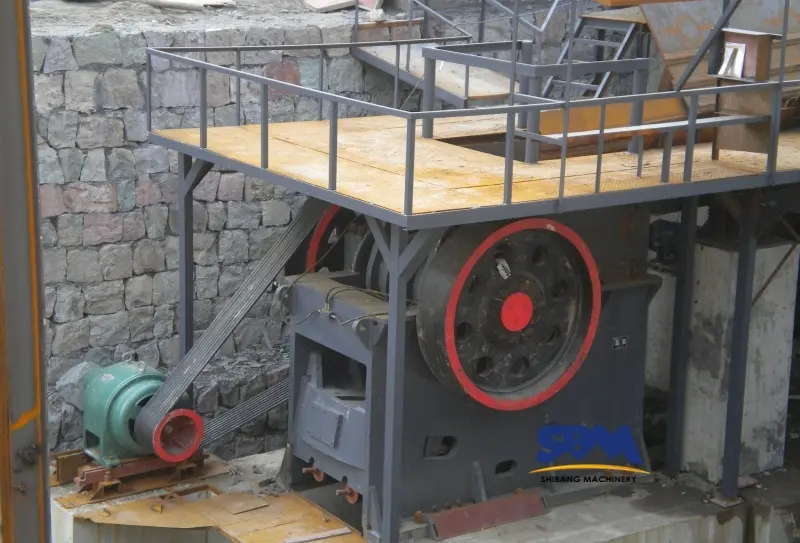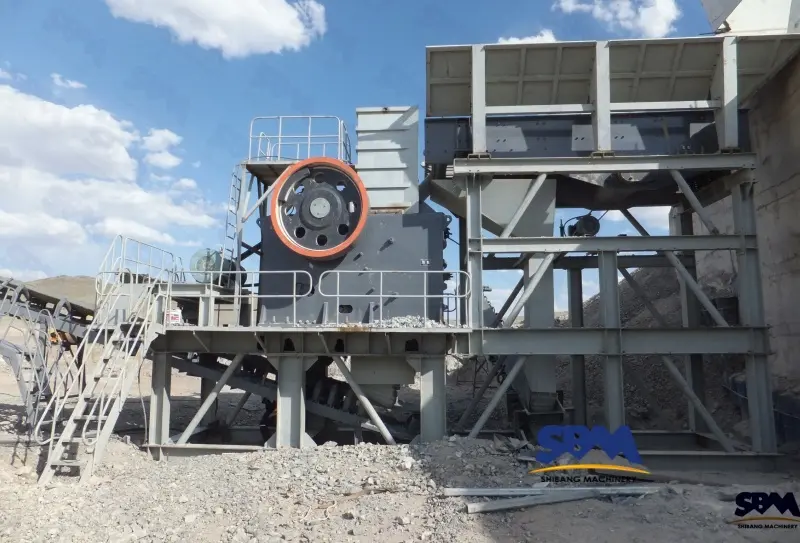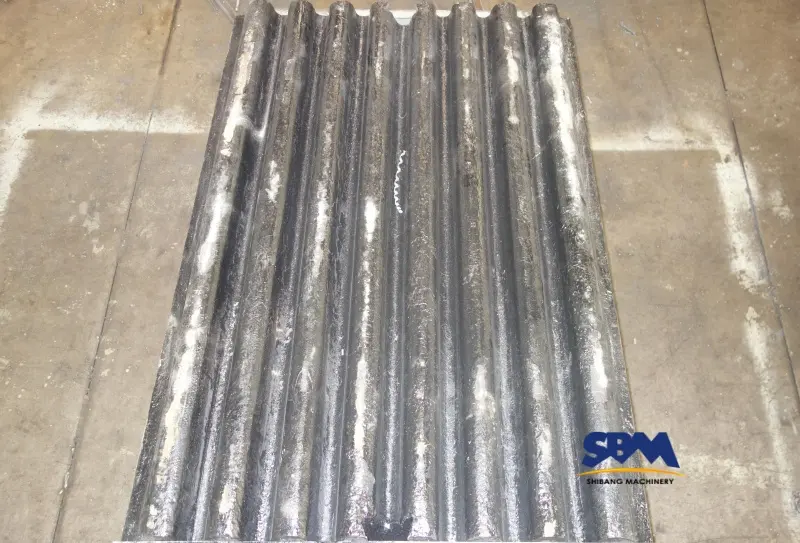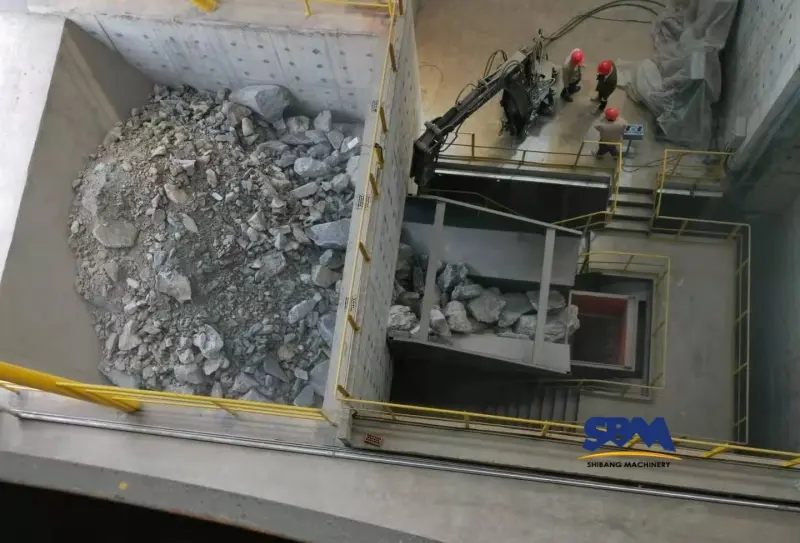Correo electrónico: [email protected]
Cómo elegir el tamaño de trituradora de la mandíbula adecuada para su industria?
Selecting the right jaw crusher size isn’t a guessing game—it’s a science rooted in material dynamics and operational calculus. For industries from hard-rock mining to urban reciclaje de concreto, even a 10% mismatch in crusher dimensions can slash throughput by 30% or spike wear part costs by 50%. Here’s how to engineer your choice with laser-focused precision.

Why Jaw Crusher Size Matters?
The right jaw crusher size directly influence your workflow. A crusher that’s too large drains power and devours workspace footprint, while undersized models trigger mechanical failures and bottleneck entire operations. Take real-world proof: A South African gold operation slashed unplanned downtime 22% within six months by swapping to a properly scaled crusher matched to their vein quartz ore’s crushing resistance.
Key Factors to Consider:
- Material Properties
- Hardness: Softer materials (P.EJ., caliza) require smaller crushers.
- Tamaño de alimentación: Larger rocks need wider throats.
- Contenido de humedad: Wet materials demand deeper chambers to prevent clogging.
- Throughput Requirements
Calculate daily tonnage. A mid-sized crusher (P.EJ., 10×24 inches) handles ~150–200 tph, ideal for small quarries. - Space Constraints
Urban construction sites often opt for compact crusher models like 8×16 inch jaw crushers.

Industry-Specific Sizing Strategies
Minería: Match Crushers to Ore Type
- Iron Ore (Brazil): High-capacity 32×16 inch units process 300+ tph.
- Coal (India): Smaller 18×24 inch crushers suffice for low-abrasion coal.
Construcción: Balance Mobility and Power
- Demolition Debris (UAE): Truck-mounted 20×36 inch crushers for on-site processing.
- Road Base Prep (Alemania): Stationary 16×24 inch models for consistent output.
Reciclaje: Focus on Versatility
A 24×36 inch crusher in Tokyo’s e-waste facility handles mixed metals and plastics, with adjustable settings for varying feedstock.
Technical Specs You Can’t Ignore
1. Openings & Chamber Design
- Width: Determines feed size (P.EJ., 36-inch width accommodates 24-inch rocks).
- Depth: Affects retention time; deeper chambers suit fibrous materials like rubber tires.
2. Motor Power
Underpowered motors (P.EJ., 150 HP for a 20×36 inch unit) cause inefficiency. Use this formula:
HP=2000Tonnage×Work Index
3. Stroke & CSS Adjustment
Hydraulic systems (common in EU models) allow quick CSS changes, optimizing for clay vs. granito.

Avoid These Sizing Mistakes
- Ignoring Wear Parts: Replace concave liners regularly—worn plates force overloading.
- Overlooking CSS: A fixed closed-side setting reduces crushing efficiency by 15%.
- Neglecting Safety Margins: Add 10–15% to rated capacity for peak demands.
Cost vs. Longevidad: Striking the Balance
A German recycling plant learned this the hard way: Cutting corners on right jaw crusher size saved 10kupfrontbutcost50k in annual maintenance. Invest in robust builds (P.EJ., Ni-hard cast steel) for heavy-duty cycles.
Final Checklist for Jaw Crusher Size
- ✅ Match feed opening to largest material chunk
- ✅ Calculate HP based on material hardness and throughput
- ✅ Factor in space and portability needs
- ✅ Allow room for CSS adjustments
By aligning jaw crusher dimensions with real-world demands, you’ll boost productivity without overspending. Ready to optimize? Start by analyzing your feedstock and throughput goals today.
Oficina central
Whatsapp:+8615225176731
Correo electrónico: [email protected]
DIRECCIÓN: No. 1688, Camino del este de Gaoke, Nuevo distrito de Pudong, Llevar a la fuerza, Porcelana.
Sitio web: https://www.mill-sbm.com/
Contenido del artículo
Mensajes recientes
- Cómo elegir el tamaño de trituradora de la mandíbula adecuada para su industria?Selecting the right jaw crusher size isn’t a guessing game—it’s a science rooted in material dynamics and operational calculus. For industries from hard-rock mining to urban concrete recycling, even a…
- ¿Cuáles son las causas de daño a la placa de trituradora de la mandíbula??Porque está bajo una presión tremenda durante el procesamiento de materiales, Hay muchas causas del daño de la placa de trituradora de la mandíbula.. Comprender por qué degradan prematuramente puede ahorrar costos y ...
- ¿Cuál es la trituradora de la mandíbula ideal para el triturador de granito??La implacable dureza de Granite exige que Jaw Crusher construida para soportar: piense en las mandíbulas blindadas y los marcos inquebrantables. Priorizar trituradoras que combinan la fuerza bruta con ingeniería de precisión, como aleaciones tratadas con calor y cámaras aplastantes adaptativas ...


